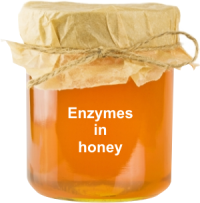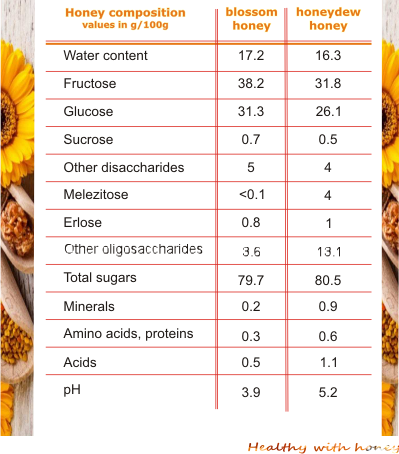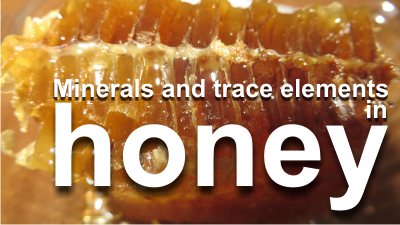What’s all the fuss about raw honey vs pure honey and its present enzymes? Are they the reason we need to buy expensive honey instead of a cheap one?
With all this awareness of honey and bees, and all this almost psychotic obsession for natural, raw and organic food, raw honey has gained a lot of popularity among people.
Why so popular? Mainly because “raw” is now promoted on numberless blogs, which copy or rewrite the same text over and over, polishing their words with other “WOW”- words and posting pictures of perfect young girls, radiating health through all their cells!
So, if these days only raw is healthy, honey should also be raw, right? The truth is that, compared to lots of other products that don’t necessarily have to be raw to be healthy, honey does need to be as raw and fresh as possible. Otherwise, it’s only sugars.
Why are we at this “raw” point? Because of too many diseases and too little help offered by our conventional medicine. That’s why. People are desperate to stay healthy and inevitably slip into extremism. Raw honey is one disputed subject, too. We’ll see here if enzymes are that very important thing found in raw honey and how important they are for us.
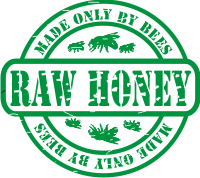 I wrote about the differences between raw honey and pure honey, about what is organic versus regular honey, and what it takes to be considered organic honey.
I wrote about the differences between raw honey and pure honey, about what is organic versus regular honey, and what it takes to be considered organic honey.
It’s difficult these days to find raw organic honey. In case you miss the articles, please read them, it helps in understanding this article.
Enzymes are among substances present in fresh raw honey that disappear after heating.
Honey is composed mostly of the sugars glucose and fructose. Minor components of honey include proteins (0.25–0.5%), enzymes, organic acids, aminoacids, vitamins and flavonoids.
What are enzymes?
Words ending in “ase”. 🙂
The first part of the word is formed either from a substance they help to break apart (For example, lactase and lipase break down lactose and lipids.) or after the things they do, (like invertase, which inverts (or separates) sucrose back into its component parts.).
Some scientists call them “life force”. Enzymes are complex protein molecules found in every cell of your body. Molecules that accelerate, or catalyze, chemical reactions in our body.
All living organisms (honey bees or humans) produce their own enzymes to provide the nutrients they need. Everything else, all our food, plant or animal, contain enzymes.
Digestive enzymes work inside the digestive tract to break down our foods so they become small enough to be absorbed. Firstly, in our month, the amylase enzyme breaks down carbohydrates (like rice or pasta) into smaller sugars.
Then in our stomach, the digestive enzymes help transform food into tiny nutrients that the body can absorb and use to renew aging cells and provide energy.
The enzymes in our body decrease with our age. The fact that we eat over-processed food, which implies heating it over 60° C, doesn’t help either. This lack of enzymes may lead to frequent fatigue, dizziness, lack of mental focus, muscle pain, indigestion, lack of appetite, and low blood sugar.
Supplementation is needed. Fresh and raw fruits and vegetables are a great source of enzymes. Raw honey also contributes to the amout of enzymes in our body, though these are found in small quantities in honey. Yet, they synergistically work with other substances and support our health and tonic.
Did you know?
Japanese are considered to be one of the healthiest nations in the world. It could be due to their culinary habits of eating relatively large quantities of raw, enzyme-rich fish and seafood and cook their vegetables at a minimum.
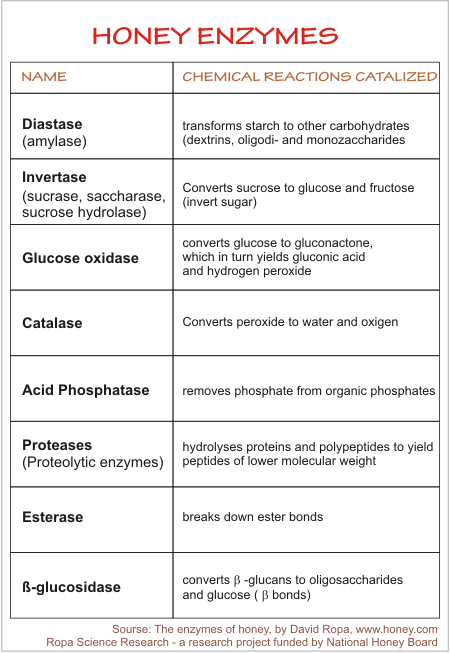
Why are there enzymes in honey?
Because enzymes are the substances that transform the collected nectar into honey.
From the enzymatic reactions in nectar, a wide array of compounds result, and all these give honey its unique character and functionality. The complicated carbohydrate profile of honey is partially the result of enzymatic action.
How does it work?
The foraging bees collect the nectar from flowers and, while continuing their foraging trip, mixed it with secretions from their salivary and hypopharyngeal glands. In the hive, the nectar is passed from bee to bee and more secretions are added before it’s stored in the cells.
Thus, the amount of enzymes present depends on the age, diet and physiological stage of the bees (when a bee is a forager, its glands produce more digestive enzymes), strength of the colony, temperature of the hive, nectar flow and its sugar content.
But in raw honey, there are not only enzymes from the bees, the nectar itself contains enzymes.
Because of the different nectar sources, the enzyme activity will also vary greatly in different honeys.
Honeydew honey has high enzyme activity, while arbutus honey has virtually no enzyme activity, because it’s produced in late autumn and over-wintering bees have reduced gland activity. (http://www.enzyme-facts.com/raw-honey-enzymes.html)
Naturally, honey contains small amounts of enzymes.
What enzymes are present in honey?
The predominant enzymes in honey are diastase (amylase), invertase and glucose oxidase.
Others, including catalase and acid phosphatase, can also be present, depending on the type of floral source. And recently proteolytic enzymes have been described in honey.
Enzymes play an important role in honey and contribute to its functional properties, being a unique ingredient that makes honey a product far more complex than other sweeteners.
Diastase
– Also known as α-amylase enzyme.
– it is found in nectar but it is also added by the honey bee during the collection and ripening of nectar.
– The diastase content of fresh unheated honey can vary depending on the type of floral source: For example:
· Orange blossom has probably the lowest content: 4.25 DN (diastase number)
· Clover has 5.73 DN
· Pepper has 13.2 DN
· Multifloral has 22.0 DN
· Eucalyptus has 24.0 DN
· Buckwheat has 36.8 DN
– Its content is influenced by: the natural difference in pH among honeys, nectar flow and foraging patterns of the bees.
– It digests starch to simpler compounds. Yet, its purpose in honey is unknown to the scientists, because there is no starch in nectar (or the later honey). So, why do the bees add it in the nectar?
– If it is stored at moderate temperatures for a log time or if it exposed to high temperatures, diastase in honey will be inactive.
– DN can also be modified if the pH is modified. The optimum pH range for this enzyme is 4.6 to 5. Complete control of diastase activity can be achieved at a pH of less than 3.9.
Amylase is stable at pH values from 7 to 8.
– Due to various factors that may modify its content, diastase cannot represent a way of confirming honey quality. What we know for sure is that diastase decreases in old or heated honey.
– In food processing, the presence of diastase in honey used as a sweetener in foods containing starch has been reported to cause the food to lose its viscosity.
Invertase
– Also known as Sucrase, Sucrose Hydrolase, Saccharase.
– it is added to the nectar by the bee, on the way to the hive. Due to this enzyme, the nectar will ripe to honey.
– it hydrolyzes sucrose to fructose and glucose.
– it is present in small quantities
– it is inactivated by heating.
– most ripe honey has very little sucrose, usually less than 5 percent, the enzyme’s work is done early in the life of the honey.
– Honeydew honeys have the highest level of invertase activity.
– In nature invertase is present in plants like Japanese pear fruit, the common garden pea, and in cereal oats. But the most common source by far is Saccharomyces cerevisiae, also known as ale yeast, bread yeast, or wine yeast.
– Invertase is used a lot in baking industry.
invertase is an important ingredient in the production of candies and frostings. When added to regular sugar syrup, it breaks down (or inverts) the disaccharide sucrose into two monosaccharides, glucose and fructose. The resulting mixture, called invert sugar or invert syrup, helps keep baked good soft and moist.
Chocolate-covered liquid cherries need invertase to exist!
Cherries are covered in a fondant that has been treated with a small bit of invertase and then coated with chocolate. Slowly, in a process that spans several days, the invertase breaks down the sucrose into the transparent, sweet, syrupy confection that surrounds the cherry and fills the hard chocolate shell.
Acid phosphatase
– is an enzyme in honey related to honey fermentation. Honeys that ferment more easily have shown higher acid phosphatase activities than unfermented honeys.
– it is mainly present in pollen, although it is also a component of nectar.
– Acid phosphatase activity is higher in honey from oceanic climates.
– The pH of honey has been demonstrated to have a strong influence on the activity of acid phosphatase. The higher the pH, the greater the acid phosphatase activity. (S.R. Alonso-Torre. 2005. Evolution of acid phosphatase activity of honeys from different climates. Food Chemistry 97 (2006) 750–755. )
Catalase:
– it is found in some types of honey which is why it is considered to come from from the nectar of the plant.
– catalase decomposes hydrogen peroxide and so its presence will reduce the antibacterial activity of the honey. Which means honey with high catalase activity has low antibacterial peroxide activity.
Glucose oxidase
– it is added by the bees (There is some evidence that there are at least two variants of this enzyme coming from different parts of the bee)
– it’s an active enzyme in nectar but is virtually inactive in honey. The enzyme may become active again if the honey is diluted.
– it plays a part in the formation of honey in the hive: it oxidizes glucose in the un-ripened honey. It yields gluconolactone, which equilibrates with gluconic acid, the principal acid of honey.
It also produces hydrogen peroxide, which contributes to the antibacterial properties of honey.
The production of both gluconic acid and hydrogen peroxide is extremely slow in ripe honey and most of it is produced when the honey is being ripened and dried by the bees.
– in the past, it was called inhibine.
– it is sensitive to light and heat (even by microwave ovens). Stable till 55º C. Some types of honey lose their content of glucose oxidase activity when exposed to small amounts of visible light, while others are not affected even by strong sunlight.
In the past, it was considered that honey was antibacterial because its high osmotic properties. But after dilution, honey keeps some of its antibacterial properties.
How are enzymes of honey used in food products?
When used in food manufacturing, sometimes it is good to have enzymes in honey but sometimes is not.
• For example, diastase is not wanted, or wanted in really small quantities.
In salad dressings, the presence of diastase could contribute to unwanted separation due to the degradation of starch.
So, to be able to use honey in salad dressings, producers heat the honey or purchase honey that has been further processed to remove this enzyme.
To do this, a minimum temperature of 85 ºC for about 5 minutes is recommended.
• Honey can be blended with the enzyme pectinase to significantly improve clarification in fruit juices.
Using honey at refrigeration temperatures to clarify juices and wine is an effective way to add sweetness to a natural beverage and capitalize on honey’s natural and functional benefits.
• Acid phosphatase is the enzyme in honey related to honey fermentation. The higher the pH, the greater the acid phosphatase activity. This is also useful in food manufacturing.
Other physical and sensory properties make honey a good candidate for an additive to a wide variety of food. For example, good sensory and rheological properties and superior microwave reactivity compared to synthetic sugars. If you are interested in this field, check the American National Honey Board (http://www.nhb.org/foodtech/index.html)
Proteolytic Enzymes are present in raw honey
Proteolytic enzyme, also called protease, proteinase, or peptidase, are enzymes that break the long chainlike molecules of proteins into shorter fragments (peptides) and eventually into their components, amino acids.
On short, they are enzymes that break down proteins into amino acids.
Examples of such enzymes: pancreatic proteases chymotrypsin and trypsin, bromelain (pineapple enzyme), papain (papaya enzyme), fungal proteases, Amylase in mango and Serratia peptidase (the “silk worm”enzyme).
Honeybees use proteolytic enzymes in their bodies: three midgut endoproteinase (trypsin, chymotrypsin and elastase) and the exoproteinase leucineaminopeptidase to digest dietary proteins, but their presence in honey has not been proven/described since 2012.
The study What Are the Proteolytic Enzymes of Honey and What They Do Tell Us? A Fingerprint Analysis by 2-D Zymography of Unifloral Honeys, by Rocco Rossano et al., published in 2012, shows that though they were unrevealed by that time, there are proteolytic activities present in row honey.
The study’s results suggest that the proteolytic enzymes of honey can significantly change the protein profile of honey and thereby strongly influence quality and nutritional value of honey and royal jelly.
Are enzymes the most important components of honey in terms of antimicrobial activity?
Enzymes and hydrogen peroxide will aid in the debridement of a wound. Honey promotes the growth of epithelial cells by providing a barrier to moisture, which helps keep the wound hydrated. Read more about Manuka honey – THE BEST to treat wounds, burns, skin infections.
But are enzymes the most important? No.
Some of the antimicrobial activity originates from the bees (the peroxide producing enzymes, the honey acids, carbohydrates, defensin-1, antibiotic-like compounds), some of it originates from the plants (methylglyoxal, polyphenols) and a third part might be created during honey storage (Maillard products).
Honey is way too complex to reduce its antimicrobial activity to enzymes alone.
One thing is sure: the use of excessive heat for pasteurisation and liquefaction might have adverse effects on honey quality, such as loss of volatile compounds and reduction of enzyme activity.
References:
– Roderick J. Weston. 2000. The contribution of catalase and other natural products to the antibacterial activity of honey: a review. Food Chemistry 71 (2000) 235±239
– Persano Oddo, L. et al. 1990. Diastatic Activity of Some Unifloral Honeys. Apidologie 21:17
– http://www.enzyme-facts.com/raw-honey-enzymes.html
– The Enzymes of Honey
– www.britannica.com/science/proteolytic-enzyme
– https://honeybeesuite.com/honey-bee-uses-invertase/
– Bee Product Science, Stefan Bogdanov, www.bee-hexagon.net, February 2014
A Jar Of Honey Stock Photo by Mister GC. via freedigitalphotos.net

